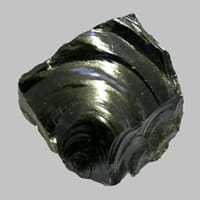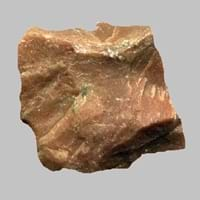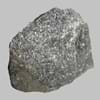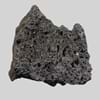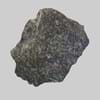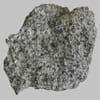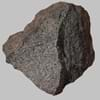Obsidian and Rhyolite
Definition
Definition
Obsidian is a naturally occurring volcanic glass formed as an extrusive igneous rock. It is produced when felsic lava extruded from a volcano cools rapidly with minimum crystal growth
Rhyolite is a fine-grained igneous rock which is rich in silica
History
Origin
Ethiopia
North America
Discoverer
Obsius
Ferdinand von Richthofen
Etymology
From Latin obsidianus, misprint of Obsianus (lapis) (stone) of Obsius
From German Rhyolit, from Greek rhuax lava stream + lithos stone
Class
Igneous Rocks
Igneous Rocks
Sub-Class
Durable Rock, Medium Hardness Rock
Durable Rock, Hard Rock
Family
Group
Volcanic
Volcanic
Other Categories
Opaque Rock
Coarse Grained Rock, Opaque Rock
Texture
Texture
Glassy
Aphanitic, Glassy, Porphyritic
Color
Black, Blue, Brown, Green, Orange, Red, Tan, Yellow
Grey, White, Light Black
Maintenance
Less
More
Durability
Durable
Durable
Water Resistant
Yes
Yes
Scratch Resistant
Yes
Yes
Stain Resistant
No
Yes
Wind Resistant
No
Yes
Acid Resistant
No
Yes
Appearance
Shiny
Banded
Uses
Architecture
Interior Uses
Decorative Aggregates, Interior Decoration
Decorative Aggregates, Homes, Hotels, Interior Decoration, Kitchens
Exterior Uses
Garden Decoration
As Building Stone, As Facing Stone, Paving Stone, Office Buildings
Other Architectural Uses
Not Yet Used
Not Yet Used
Industry
Construction Industry
Arrowheads, Cutting Tool, Knives, Scrapers, Spear Points
Arrowheads, As Dimension Stone, Building houses or walls, Construction Aggregate, Cutting Tool, for Road Aggregate, Knives
Medical Industry
Surgery
Not Yet Used
Antiquity Uses
Artifacts, Jewellery
Artifacts
Other Uses
Commercial Uses
Creating Artwork, Mirror, Used in aquariums
Gemstone, Laboratory bench tops, Jewelry
Types
Types
Fireworks Obsidian, Mahogany, Sheen Obsidian, Snowflake obsidian and Velvet Peacock Obsidian
Pumice Rocks, Obsidian Rocks, Perlite Rocks, Porphyritic Rocks.
Features
Blocks negativity, Helps to protect against depression
Acidic in nature, Available in lots of colors
Archaeological Significance
Monuments
Not Yet Used
Not Yet Used
Famous Monuments
Not Applicable
Not Applicable
Sculpture
Not Yet Used
Not Yet Used
Famous Sculptures
Not Applicable
Not Applicable
Pictographs
Used
Not Used
Petroglyphs
Used
Not Used
Figurines
Not Yet Used
Not Yet Used
Fossils
Absent
Absent
Formation
Formation
When the lava is released from volcano, it undergoes a very rapid cooling which freezes the mechanisms of crystallization. The result is a volcanic glass with a uniform smooth texture.
Rhyolite is a felsic extrusive rock and due to its high silica content, rhyolite lava is very viscous and is volcanic equivalent of granite.
Composition
Mineral Content
Not Available
Biotite, Feldspar, Hornblade, Plagioclase, Pyroxene, Quartz
Compound Content
Aluminium Oxide, CaO, Iron(III) Oxide, FeO, Potassium Oxide, MgO, MnO, Sodium Oxide, Phosphorus Pentoxide, Silicon Dioxide, Titanium Dioxide
Ca, Fe, Potassium Oxide, Mg, Potassium, Silicon Dioxide, Sodium
Transformation
Metamorphism
Yes
Yes
Types of Metamorphism
Burial Metamorphism, Cataclastic Metamorphism, Contact Metamorphism
Burial Metamorphism, Cataclastic Metamorphism, Regional Metamorphism
Weathering
Yes
Yes
Types of Weathering
Biological Weathering, Chemical Weathering, Mechanical Weathering
Biological Weathering, Chemical Weathering, Mechanical Weathering
Erosion
Yes
Yes
Types of Erosion
Chemical Erosion, Coastal Erosion, Glacier Erosion
Chemical Erosion, Sea Erosion, Water Erosion, Wind Erosion
Properties
Physical Properties
Hardness
5-5.5
6-7
Grain Size
Not Applicable
Large and Coarse Grained
Fracture
Conchoidal
Sub-conchoidal
Streak
White
Colorless
Porosity
Very Less Porous
Highly Porous
Luster
Vitreous
Earthy
Compressive Strength
0.15 N/mm2
33
140.00 N/mm2
15
Cleavage
Non-Existent
Not Available
Toughness
Not Available
2
Specific Gravity
2.6-2.7
2.65-2.67
Transparency
Translucent
Opaque
Density
2.6 g/cm3
2.4-2.6 g/cm3
Thermal Properties
Specific Heat Capacity
0.92 kJ/Kg K
10
Not Available
Resistance
Heat Resistant, Impact Resistant
Heat Resistant, Wear Resistant
Reserves
Deposits in Eastern Continents
Asia
Afghanistan, Indonesia, Japan, Russia
China, India
Africa
Kenya
Angola, Egypt, Madagascar, Namibia, Nigeria, South Africa
Europe
Greece, Hungary, Iceland, Italy, Turkey
Germany, Iceland, Ireland, Italy, Spain
Others
Not Yet Found
Not Yet Found
Deposits in Western Continents
North America
Canada, Mexico, USA
Canada, USA
South America
Argentina, Chile, Ecuador, Peru
Argentina, Bolivia, Chile, Colombia, Ecuador, Peru, Venezuela
Deposits in Oceania Continent
Australia
New Zealand
New Zealand, Queensland, Western Australia
All about Obsidian and Rhyolite Properties
Know all about Obsidian and Rhyolite properties here. All properties of rocks are important as they define the type of rock and its application. Obsidian and Rhyolite belong to Igneous Rocks.Texture of Obsidian is Glassy whereas that of Rhyolite is Aphanitic, Glassy, Porphyritic. Obsidian appears Shiny and Rhyolite appears Banded. The luster of Obsidian is vitreous while that of Rhyolite is earthy. Obsidian is available in black, blue, brown, green, orange, red, tan, yellow colors whereas Rhyolite is available in grey, white, light black colors. The commercial uses of Obsidian are creating artwork, mirror, used in aquariums and that of Rhyolite are gemstone, laboratory bench tops, jewelry.
|
||
|
||
|
